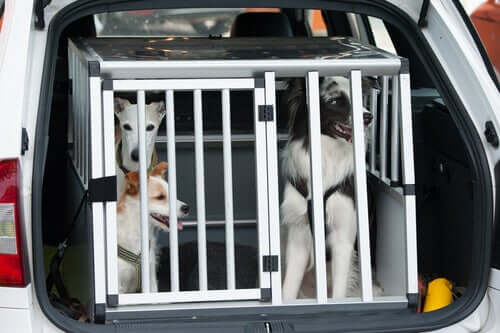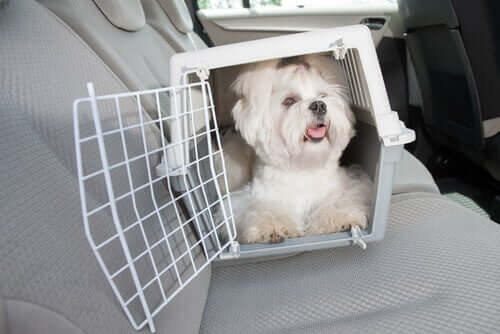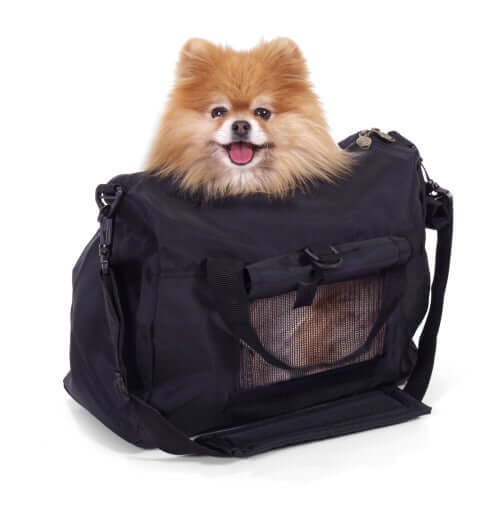Learn How to Travel with a Pet Carrier

Most countries don’t allow pet animals to travel in a car without a carrier. Because of that, the pet carrier was invented. It’s a very useful object that allows us to travel with our pet legally, and, most importantly, safely. However, how can you choose a suitable pet carrier and why is this so necessary? Stick with us and let’s find out!
What to keep in mind when traveling with a pet carrier
Your pet’s safety
The best carrier will undoubtedly be the one that keeps our pets safe. In addition, in the event of an accident, it could also save its life. There are some rigid or padded ones that could play an important role in an unforeseen event.

Obviously, merely buying such an item doesn’t ensure that your pet will come out of an accident unscathed, but it can be very helpful in keeping it alive. It never hurts to be extra-cautious.
The right fit for your pet
Dogs generally don’t like to travel by car. It’s possible your dog is one of those who’ll hide as soon as they hear the engine start. Therefore, it’s important that the pet carrier is the right fit for them.
The animal must be able to turn around inside of it with the door closed. This way, if the animal can’t hold it and urinates inside, it could move to one side, avoiding it getting stained before you can stop and clean the area. However, the most important thing is that the pet needs to be comfortable and to able to properly lie down.
It must be comfortable
Not only will the size make the carrier comfortable for your pet, but also the materials and conditioning of the container. There are many types of pet carriers on the market and some are cheaper than others. You need to ask yourself: will it be comfortable for my pet or not?
For example, a hard plastic carrier in which some pieces of metal stand out inside could be rather cold and very uncomfortable for the animal. Choose one that has a proper finish inside and in which you can add a blanket or a kind of mat so that your dog is comfortable.

Tips before you travel with your pet in a carrier
Before making a trip with your dear pet you should consider the following tips:
- Don’t feed them before the trip. If you do, you might be in trouble as the animal may vomit as soon as you hit some bends. Your pet may also want to do their business several times and this would delay your arrival. Let a few hours pass between the animal’s last meal and the trip.
- Bring water along. Water is essential for your pet and yourself. Whether you’re traveling in winter or summer, both heating and air conditioning could dehydrate your pet. Give it water from time to time and make stops for it to urinate.
- Never put the carrier in the trunk. You may think it’s silly to say this, but quite a few people have actually put their pet inside a carrier in the trunk. We don’t recommend this unless the animal is way too big, as an exception. In that case, it’s better to put it in the trunk but in a transversal way.
- If your pet is too large, you can also choose to put in a double-protection harness and a grille that separates the back from the front of the carrier.
Last but not least… Hopefully, it goes without saying that dogs should never be left alone in a car regardless of the weather. The obvious danger is heat, even in moderate temperatures.
We hope these tips will prove to be useful and we wish you happy travels! Until next time.